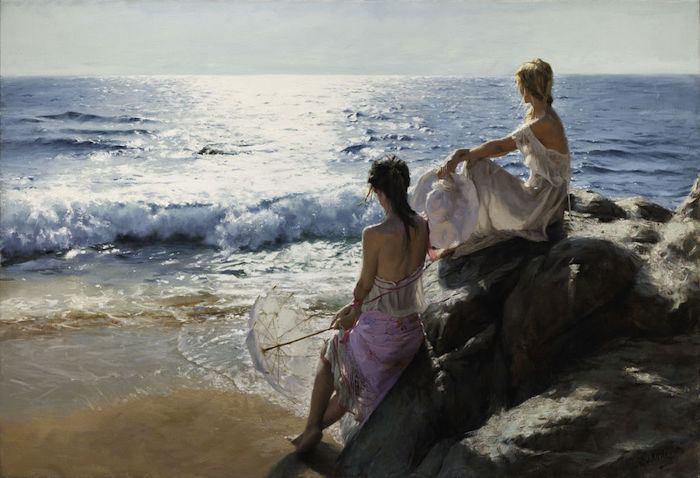Today I wanted to share with you all an exercise on how to feel your feelings that I also share with both my students and clients during our lessons and sessions together. Knowing the difference between feelings and emotions, how to feel our feelings, how to balance our beautiful emotions, and how to tune into ourselves and learn the language of our emotional world deepens our relationship to ourselves, and as such, we deepen into love and are able to experience more loving relationships with other people also.
The first thing to know about feelings is that they are pure like water. There is no good or bad, all are just like sensations that arise within us like waves, they rise and then fall, change shape and dissolve. They are actually brilliant – because they are our intuitive compass guiding us along the way. Their main purpose is to shine a light on what feels safe or what doesn’t – which is what guides us as children: is this food something I want to eat, is this situation safe for me, etc.
When we put water in a cup and we begin boiling it, we can then put some chamomile tea leaves, and what we’ll then get is chamomile tea. This tea is our emotions, which became as is because the waters were stirred with the leaves of our thoughts. and the leaves are our thoughts. Chamomile thoughts, chamomile emotions. Jasmine thoughts, jasmine emotions.
In other words, our emotions are essentially when we think our feelings. Depending on the thoughts we attach to them, which usually depend on past experiences that we associate with these feelings, this is the favoured emotions we’ll get.
So let’s say someone says, “We need to talk tonight”. If you’ve had more negatively skewed or uncomfortable experiences with this sentence associating it to something bad happening, or your current mood and day are going stressful, the emotion that arises from this will be fear or worry. “Oh my God, what will they talk about!? What if I did something wrong? What if something bad happened?”
If on the other hand, you are in a romantic mood, or the tone of voice reminds you of something pleasant from the past somehow, the emotion will be excitement.”Oh yes! Maybe they’ll give me a gift, or take me to dinner, or say how much they love me!”
In this way, we can also do a bit of reverse engineering, and by placing ourselves in things that put us in pleasant emotional states, such as certain songs, music, art, photography or environments, we will arise within us positive thoughts, and another state of mind.
We open doors through sound, scent, memories – and our own memories are like batteries, which can immediate put us in particular moods. When we feel something deeply, it’s as if it is happening to us physically – our body thinks and reacts each time we experience an emotion. So if you start watching a romantic movie, feeling butterflies and joy in your tummy, your body will think that’s actually happening to you. Or if you look at those beautiful photos from your last summer vacation when you traveled the world – well, there you are, right there! When we know the archives within us, and which doors open which memories, we can use this energy for our benefit.
Emotions are a beautiful thing. They move us so deeply that we can love, inspire and be inspired, make love and make beauty, and be creative. Emotions too are neither good or bad – they all carry important messages about our state of mind and where we are in our life. Each emotion is purposeful, but we need to know its language, so that our relationship to ourselves deepens in understanding through better communication.
Once we learn to listen to them, and listen to the message the emotion is giving us, we’ll know whether anger arises because our boundaries have been crossed, or we need to change the environment, or because a sadness that has been within us for too long is now seeking our attention to be held with compassion and acknowledged to be released. So that’s just a simple way of viewing our feelings and our emotions.
Now let’s go over some simple steps on how to feel the feelings rather than thinking them, so that we don’t over-stress, especially if something unpleasant comes up for us.
How to feel your feelings:
1. Something arises, perhaps unpleasant, scary or overwhelming.
2. Your mind starts rationalizing or taking out past experiences from the dusty archives on our minds, making up a whole story. Perhaps your mind launches whatever inner story accompanies this feeling from past experiences, stressors or even old wounds, and comes up with its corresponding rational, “I’m unlovable, I’m a failure, there is something wrong with me, I’m unworthy, I’m an idiot”. This is where you STOP because you are thinking your feelings, not feeling them.
Be loving and compassionate with your mind, because it is not doing this against you, or to hurt you, it is only doing what it knows to do based on what it has always done before, with the intention to keep you safe and stable in past knowings. Once upon a time, all these past thoughts and behaviours were useful and helpful to you in some way, but they are no longer, and so we just need to re-adjust and give it new pathways forward. When the mind doesn’t understand something, it freaks out a little bit and may become louder with fear and doubts, and even more stories.
Remember that “stories” keep us safe, because we need information and knowledge to know things, so that we control things, so that we feel more comfort and stability during times of instability and uncertainty. But when it comes to feelings, it isn’t about knowing or rationalizing, it is about letting water flow, so that it doesn’t stagnate and pollute, and it will flow out.
3. Redirect your mind away from these thoughts and into the sensations in your body. To feel your feelings, you need to feel them not think them.
First, name the feeling as it needs to be acknowledged, for example, is it anger? Then name it by saying, “I feel angry”. Don’t say “I’m angry”, so that you are not subconsciously identifying with it. Feelings are experiences moving through us, but they are not us.
And then focus on the sensations in your body: Where in the body do you feel this? How does this feel in my body, where do I feel this in my body? How does anger feel like, how does sadness feel like? Does your chest contract, is your stomach in a knot, etc.?
4. Now breathe into this feeling and sensation, and allow it the freedom to just stay like that a little bit – keep focusing on the breathing and the body, on each part of your body. And if you need to cry, just cry and let it release itself. It may feel out of control, because emotions are like waves – but most turbulence only happens at the surface. The deeper we go into the water, or the sea, eventually things are calmer and peaceful – and clarity sets in.
5. Your mind will resist this, it will want to keep pushing you to think and then attach a story to the feeling, because that’s just how our mind works. It is safety mechanism and coping mechanism for all the way back in childhood when it needed stories to make sense of the world. So the mind always goes back to a thought-story mode because that’s what it knows to do; like a little child it holds on to what it knows, but you are parent of it, so guide it to slow it and relax it, and not be afraid of the waters. Keep redirecting your focus and awareness back into your body, and be loving with your mind.
You can tell your thoughts shhh, shhh, and even say it out loud, and then redirect and keep focus on your body – on your breathing, on your hands, on your legs, on your tummy, on your chest, on your skin. You may also place your hands on your body, so it feels more grounded.
6. Breathe deeply and keeping feeling back into the body. Feelings leave us like waves, because they are water – so it will pass. Observe it changing shape, watch it move and flow, and become a calmer wave.

For more of my writings, browse through my Art of Love.
If you value what I do, you can support me and my publication by sharing my articles and poems, buy my poetry books or donate some magic coins in my hat on Paypal. If you would like to work with me, visit my Offerings.
Your support means so much to me! Thank you wholeheartedly!
Cover art by Vicente Romero Redondo, 2014 Oleo, via Wikimedia Commons. Artist’s official website is here.





